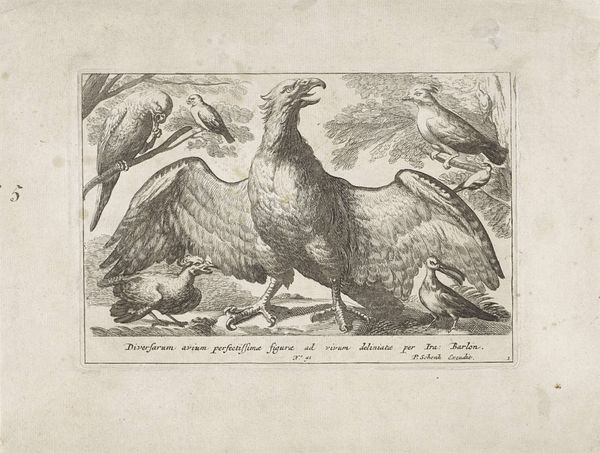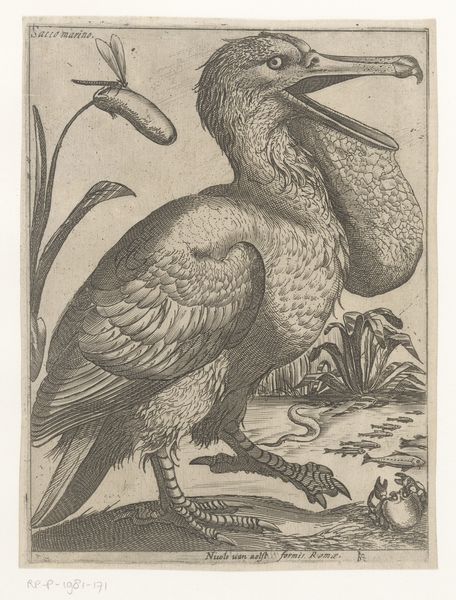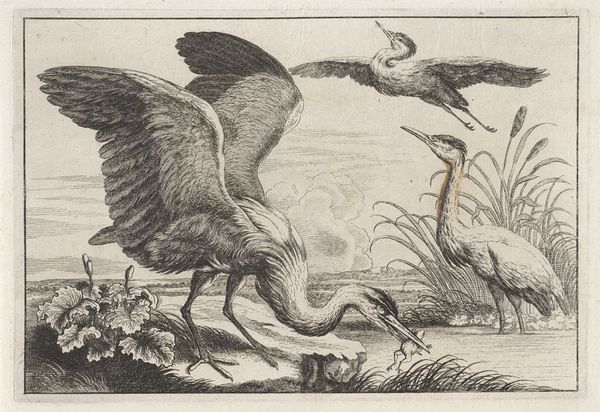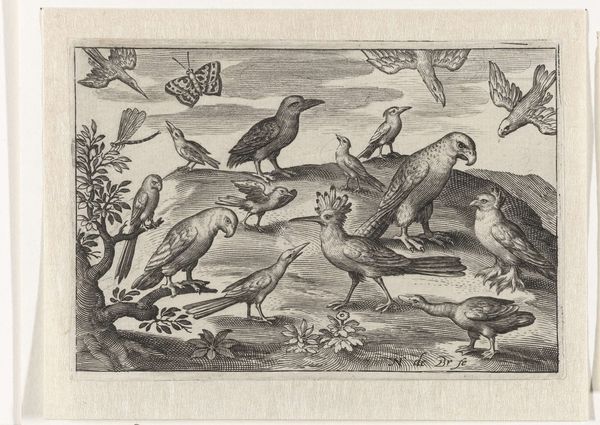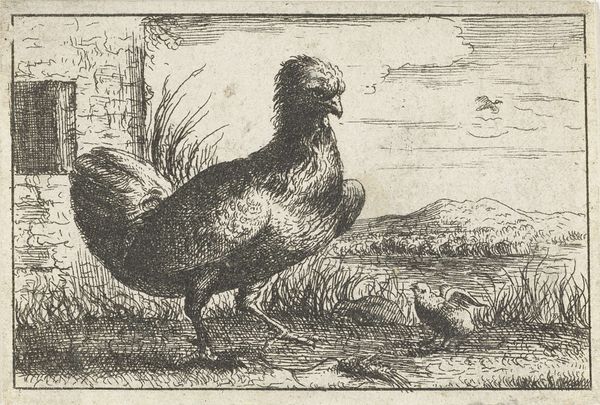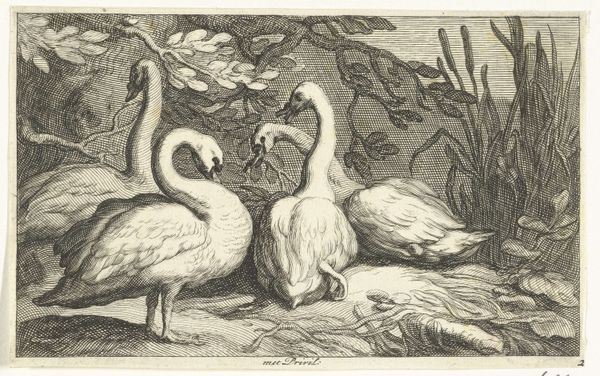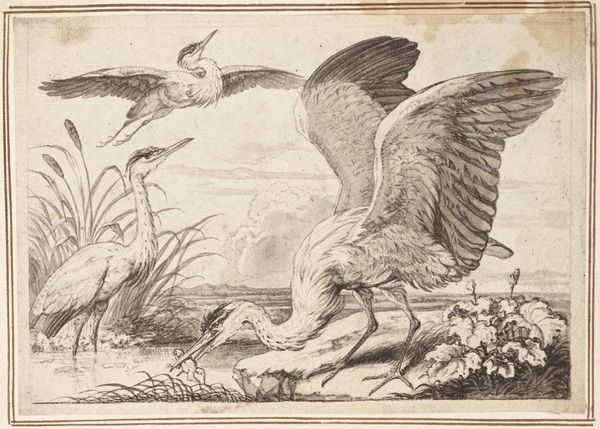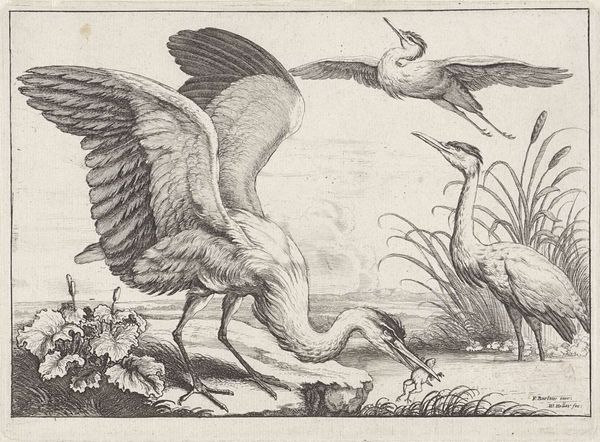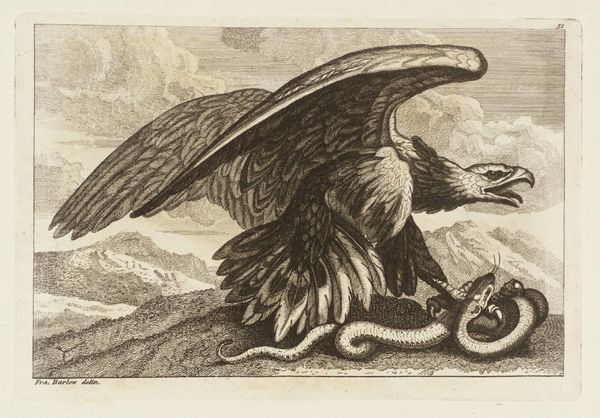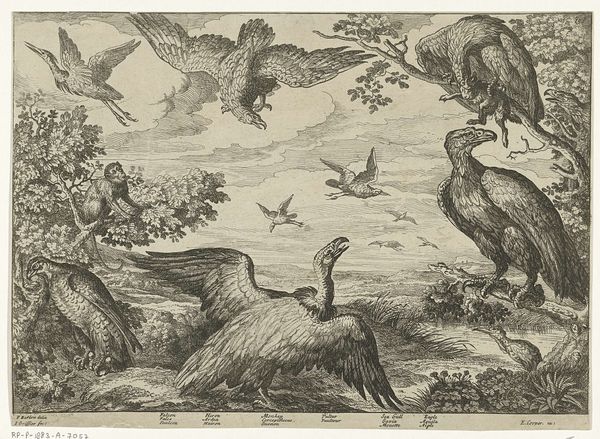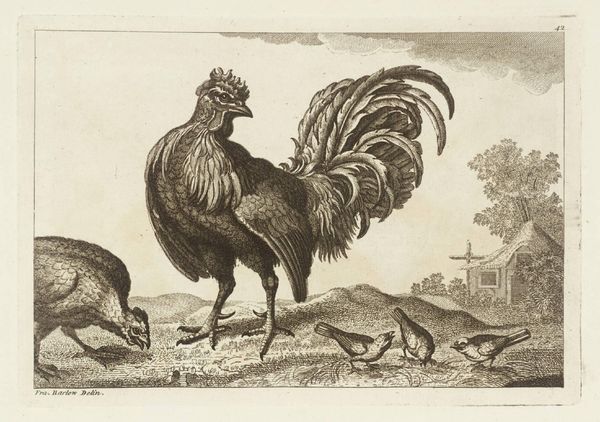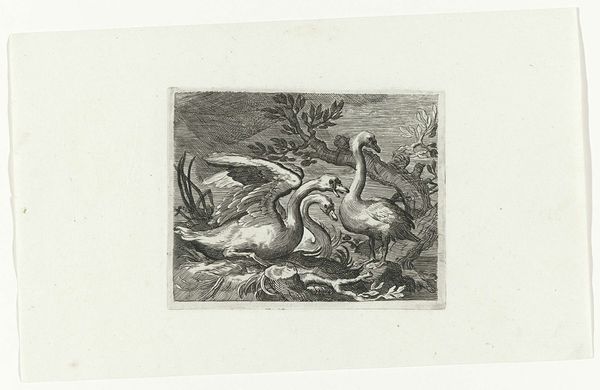
print, engraving
#
baroque
#
animal
# print
#
old engraving style
#
bird
#
personal sketchbook
#
sketchbook drawing
#
engraving
Dimensions: height 136 mm, width 186 mm
Copyright: Rijks Museum: Open Domain
Editor: So here we have Wenceslaus Hollar's "Arend," created in 1654 using engraving. There's something almost whimsical about the way he's rendered these birds, despite the very precise lines. How do you interpret this work? Curator: I find it fascinating to consider this engraving as a product of its time. Think about the accessibility of prints then. It was a means of disseminating imagery to a broader public, democratizing visual information. Who would have been commissioning or buying prints like this, and why? What need were they fulfilling, through either study or leisure? Editor: That’s interesting. I hadn’t thought about it that way. It feels like looking into someone's personal sketchbook, almost like field notes. Does the method of production -- the engraving itself -- inform your understanding of its function? Curator: Absolutely! The labor-intensive process of engraving, the skill involved in creating these delicate lines... It elevates the status of the image, distinguishing it from mass-produced materials of the day. Also, consider the materials themselves. Copper plates, ink, paper—each element has its own history, its own source, reflecting broader trade networks. Who benefitted from making art available, but also who toiled to bring it into being? Editor: So it’s not just about what is depicted, but how it was made and who had access to it. Now I'm considering who might have purchased such a specialized depiction of birds. Curator: Precisely! We can speculate about ornithologists, amateur naturalists, wealthy patrons decorating their studies, or even other artists using it for reference. Each tells a story of consumption and cultural aspiration. What does understanding all of this then do for how you see the image today? Editor: It's less about just a pretty picture and more about a small piece in a complex network of materials, labor, and consumption. Thanks for widening my perspective.
Comments
No comments
Be the first to comment and join the conversation on the ultimate creative platform.

